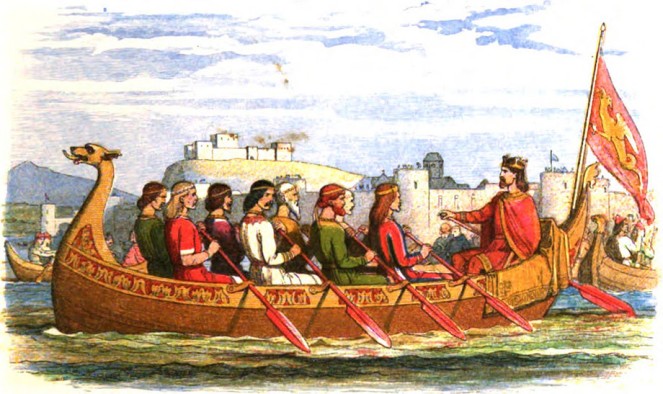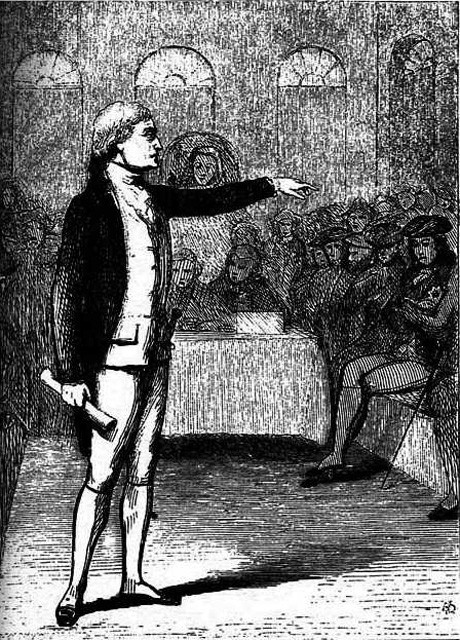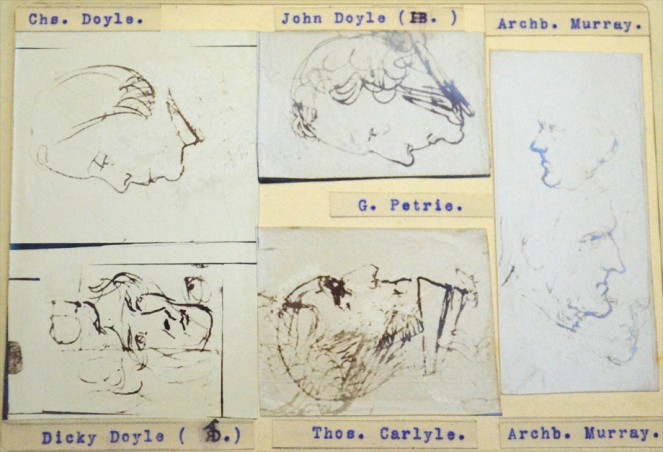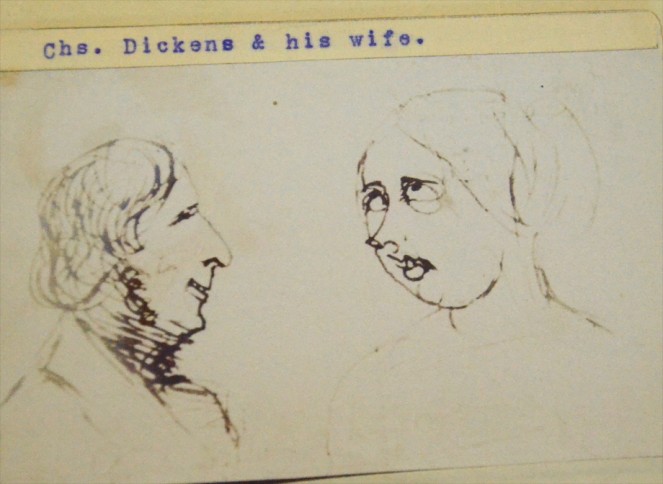by Giada Gelli, Collections Student
Ready for the third episode of the Doyle Family saga? In our previous posts we’ve touched briefly on the lives of John Doyle (HB) - about whom I found this interesting biography in Irish as well - and of his third son Richard (Dickie), the Punch Magazine and cheeky fairies illustrator. It is now the turn of James and Henry Doyle, respectively first and second son of HB.

The Barge of Edgar Manned by Eight Kings on the Dee, from A Chronicle of England (1864) by James Doyle

Grattan demanding Irish Independence by Henry Doyle, from Illustrated History of Ireland. NLI call no. Ir 941 c 72
James William Edmund Doyle (1822-92) was the oldest of the Doyle siblings and was indeed the most Victorian of them all. He was a scholar, an historian and history illustrator. He devoted himself particularly to the study of English History: first he compiled A Chronicle of England: B.C. 55-A.D. 1485, (1864), for which he also produced the rich colour illustrations. Many of these engravings, originally printed by Edmund Evans, have been digitised and can be found (and indeed downloaded!) on Wikimedia Commons. Then James embarked on a 13-year project which concluded with the publication in 1885 of the Official Baronage of England, an exhaustive study of the English peerage, later adopted as an authoritative textbook of the College of Arms. This monumental work has also been digitised and can be read in full on the Open Library website.
In James Doyle's life there doesn’t appear to have been any particular link with his Irish roots; he was born in London and he devoted all his life to the historical understanding of English history and heritage. On the contrary, his brother Henry was to be the member of the Doyle family to retain and ultimately build the strongest bond with Ireland.

Portraits of prominent figures of the day, by Henry Doyle. NLI call no. PD 2041 TX
Henry Edmund Doyle (1827-92) shared the same middle name with, and died in the same year as his older brother James, but this seems to be the extent of their similarities. Henry’s links with Ireland were strong from the very beginning. He was born in Dublin and although he was very comfortable and well-known in the Victorian high-class and artistic circles of London, he eventually moved to Dublin where he became Director of the National Gallery of Ireland.
Henry started off his career as a painter of portraits and religious subjects. He was a very devout Catholic throughout his life, with strong ties to the Church. If you’re ever around Cabra in Dublin, you could admire the religious frescos that he painted in St. Mary’s Dominican Convent.

Portraits of prominent figures of the day, by Henry Doyle. NLI call no. PD 2041 TX
However, his religious beliefs didn’t stop him from being a very sociable and outgoing person, and indeed very influential among his peers. Here at the National Library it is possible to admire an album of photographs of his portraits of prominent figures taken during a visit in Dublin to Denis Florence McCarthy, poet and essayist, in 1852. [NLI call no. PD 2041 TX]. These are only plain ink sketches but give an idea of the type of social life that Henry was leading, and of his artistic skills. Henry also contributed illustrations for the volume The Illustrated History of Ireland: from Early Times 400AD-1800 AD, (1868) [NLI call no. Ir 941 c 72], fully digitised at Project Gutenberg.

Mr and Mrs Charles Dickens. NLI call no. PD 2041 TX
Perhaps Henry's greatest achievement was his appointment to the Directorship of the National Gallery of Ireland in 1869. He was only the second director in the recently established gallery, and he held this position for 23 years until his death, making him the longest serving National Gallery director to date. If you are interested in knowing more about Henry Doyle’s contribution to the management and expansion of the National Gallery’s collections during his directorship, I would recommend a very comprehensive article written by Anne Hodge, curator of Prints and Drawings at the Gallery, published for the Irish Art Review [Sound Judgement and Pure Taste, Vol. 24, No. 1 (Spring, 2007), pp. 92-97].
Right, that's it for now. See you next time for the last episode of the Doyle family saga, where we will explore the life of (I have to admit it) my favourite of the Doyle brothers, Charles Altamont Doyle. His drawings were simply mindboggling. There are some stunning originals here at the National Library and I will show them to you, so make sure you don’t miss the last post! Until then...

